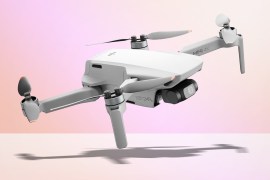DJI Neo review: 135g of fun, but a serious drone too
Is this tiny entry-level drone the One? Almost…
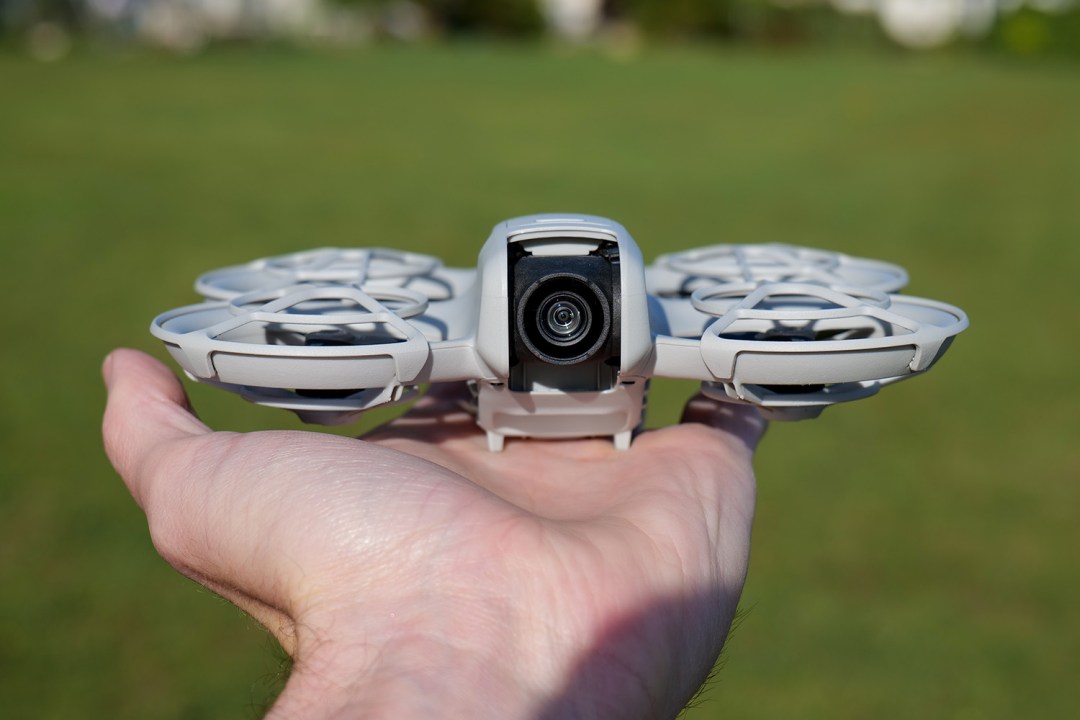
Stuff Verdict
The Neo is a ‘serious’ drone at the size and price of a toy drone and, while it has plenty of limitations, it’s the perfect drone for kids and novice pilots. Be warned though: once you’ve caught the d
Pros
- Compact, sturdy build
- Fun to fly with a controller, and flyable without one too
- Very affordable
Cons
- Automated flight options limited
- Average camera performance
- No obstacle avoidance
Introduction
DJI sells a wide range of camera drones, as befits its status as the clear market leader. But until the Neo landed on my desk, I’d never seen a real entry-level model from the company – the sort of product you might conceivably impulse buy while wandering down the high street.
Priced at $199/£169/€199 without a controller, the Neo is £100 cheaper than DJI’s next-cheapest model (the DJI Mini 4K). It’s also the most compact, most lightweight drone DJI has ever made. Put simply, it falls into the ‘toy drone’ category. I quickly realised, however, that it’s a full-blooded drone at a toy drone’s price – albeit one that comes with a few rough edges compared to DJI’s pricier offerings.
Is the DJI Neo the perfect first drone for green pilots looking to learn the ropes? After a week of flying it around my neighbourhood, I’m ready to tell you.
How we test drones
Every drone reviewed on Stuff is tested in a range of lighting and wind conditions where possible, with a variety of subjects and scenes. We use our years of experience to compare with rivals and assess ergonomics, features and general usability. Manufacturers have no visibility on reviews before they appear online, and we never accept payment to feature products.
Find out more about how we test and rate products.
Design & build: tiny but tough


The Neo weighs just 135g, essentially allowing it to be flown almost anywhere in the UK. You’ll still need to stay away from crowds of ‘uninvolved’ people, out of restricted zones around airfields and the like, and fly with caution – but you’re free to launch it in public places as long as you’re careful. Legal stuff aside, the weight – along with the dimensions of just 104.2x150x45.2mm – make the Neo delightfully portable and easy to launch from the palm of your hand. While it doesn’t fold into what I’d consider a truly pocketable size, it’s slim enough to slip into a large coat pocket or small bag.
It’s well-built too. All four propeller motors are well protected thanks to the built-in prop guards, while a pull-off plastic cover keeps the delicate camera safe when not in use. So, I had no anxieties about sticking this into my backpack with the rest of my stuff – it wasn’t going to fall to bits while jostling for space with my water bottle and mirrorless camera.
The guards and build also help protect the Neo from the crashes that, as I’ll cover in detail below, will almost certainly happen during flight. I crashed it a couple of times during the review, and my sample was left with nothing more than a couple of tiny battle scars. It was ready to get back in the air straight away.
In terms of controls and the like, things are kept nicely simple. There’s a power button, plus another for cycling through the automated Intelligent Flight Modes (more on those below). Batteries slide in and out easily after pressing a catch, while there’s a USB-C port for charging and image transfer. That’s really about it: with the Neo relying on built-in storage, it doesn’t even have a memory card slot.
Features & battery life: auto shots and shorter flights
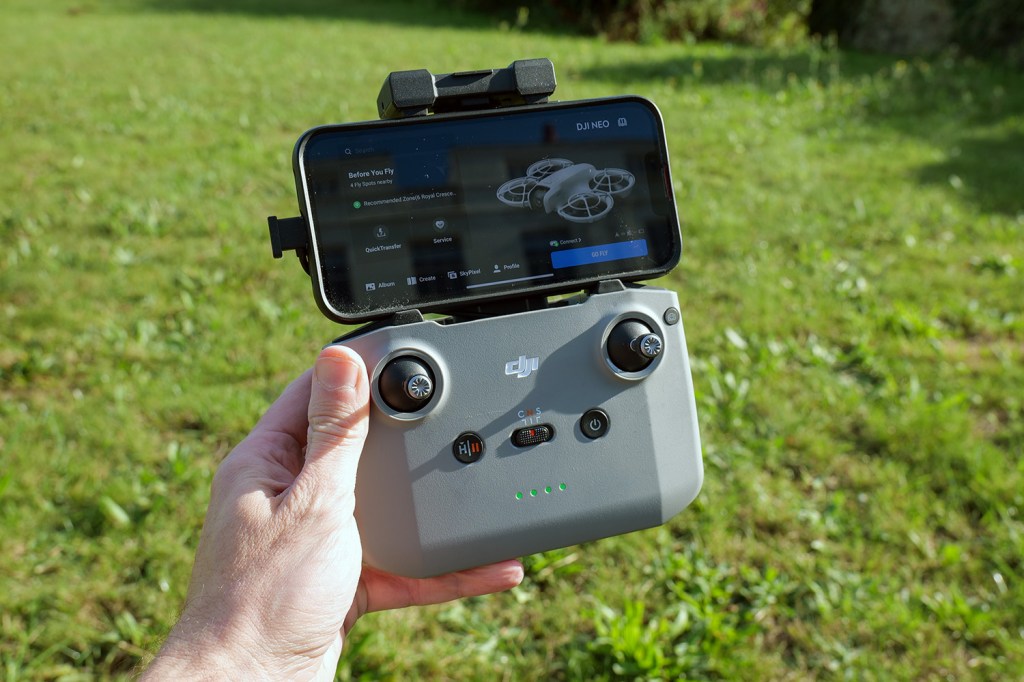
Despite its cheap price and compact size, the Neo isn’t short on features, including one that hasn’t been seen on previous DJI drones is the option for controller-free flying. A button on the Neo’s top face can select one of six Intelligent Flight Modes, each of which makes the drone take off from the user’s hand, then perform a specific set of aerial moves before returning and landing back in the hand. It does this by recognising the user’s body shape and using it as a reference.
These modes are impressive in theory, but I found myself a bit frustrated with the (necessary) lack of control they gave me. For controller-free flight, I preferred pulling out my smartphone, firing up the DJI Fly app and using a Wi-Fi connection to select the Flight Mode or move the drone manually. Wi-Fi control works to a range of about 30m, is pretty responsive and allows you to preview shots on your phone screen.
Reading between the lines of DJI’s press release, with its mentions of vloggers and ‘everyday recording’, it’s clear the Neo is designed with this kind of shorter flight in mind (at least compared with the company’s other drones). To that end, a full battery will provide up to 18 minutes of flight – a lot less than the 30 to 40 minutes most recent DJI drones can deliver but still more than enough to grab a few shots on a day trip or at a family gathering.
For recharging, you can plug a cable directly into the drone, in which case it’ll take about 50 minutes to charge an empty battery to 100%. Those who buy the Neo in its Fly More Combo bundle form, on the other hand, can use the included 60W charging hub to recharge up to three batteries simultaneously; it’ll fully charge all three in just an hour.
Flight performance: agile in the air
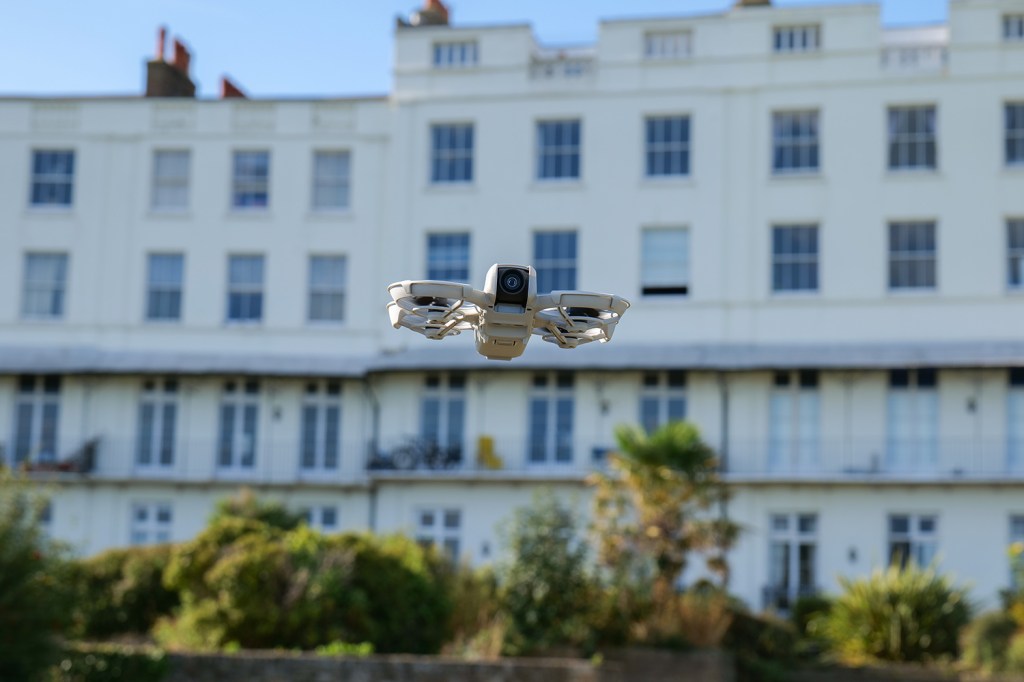
When paired with a standard twin-stick controller, such as the RC-N3 included in the Fly More Combo, the Neo flies almost exactly like other DJI drones I’ve used. That includes an almost comically long transmission range (10km in theory, although you’d be mad to attempt even a third of that if you actually want the drone back), highly responsive controls and GPS-powered return-to-home feature – all things that set this thing apart from toy drones. I also really liked the reliable way it launched out of and landed on my hand – something I’ve tried with other small drones and always found a bit hit and miss (literally).
It’s a proper drone, in other words, and a great way to master the flight basics without risking the loss of something really expensive like an Air or Mavic model. It can even be flown FPV style if you happen to have a set of DJI Goggles 3 handy (I didn’t, so wasn’t able to test this mode out).
There are some aspects that don’t match up to the pricier models, though. Its wind resistance (the ability to hover in place in windy conditions) isn’t as strong as I’ve come to expect from DJI models, and a couple of times I found it unable to fly into the wind at all. Most toy drones feature no wind resistance at all, however, so having some feels like a bonus here.
There’s no obstacle detection, which is why I mentioned the ‘certainty’ of crashing earlier. With no sensors to prevent collisions with trees, fences and the like, unless you’re an extremely careful or lucky pilot the Neo is probably going to crash quite often. That’s especially truly if you’re using the automated Intelligent Flight Modes. Given the price and entry-level status of the drone, I would have been astonished to see obstacle detection included here, so I’m not going to complain about it. But it’s something to consider when flying it.
Camera performance: 4K – but not 4 big screens



On paper, the Neo’s camera specs are impressive. It has a half-inch sensor that can record 4K video at 30fps, or Full HD video at 60fps, and take 12MP photos. It also offers two electronic image stabilisation options.
In practice, things aren’t so great. For starters, the video bitrate is low and the resulting footage, even at 4K, looks over-sharpened and under-detailed. In low light conditions, everything becomes noisy and muddy. When viewed on a small smartphone screen, none of the above is a big problem – everything looks quite sharp and colourful. But on a larger screen the flaws are hard to ignore. Stabilisation is quite effective however, with horizon levelling up to 45º.
To expect more from such an affordable drone is greedy, but I couldn’t help but feel a little disappointed as I reviewed the clips I’d captured. That’s DJI’s own fault for making its other drone cameras so great, I suppose. But again, if you compare the Neo’s image quality to that of its toy drone contemporaries rather than its more expensive DJI stablemates, things seem a lot rosier. Clearly, DJI had to make sacrifices to keep the cost down, and the fact that the video is still very watchable on a phone screen means I wouldn’t call it a deal-breaker at all.
Photos and videos are stored on the 22GB of built-in memory. It can accommodate around 40 minutes of 4K footage or 55 of Full HD footage, and it’s easy to move it to your computer via USB-C or to your phone via a fast 30MB/s QuickTransfer Wi-Fi connection.
DJI Neo verdict
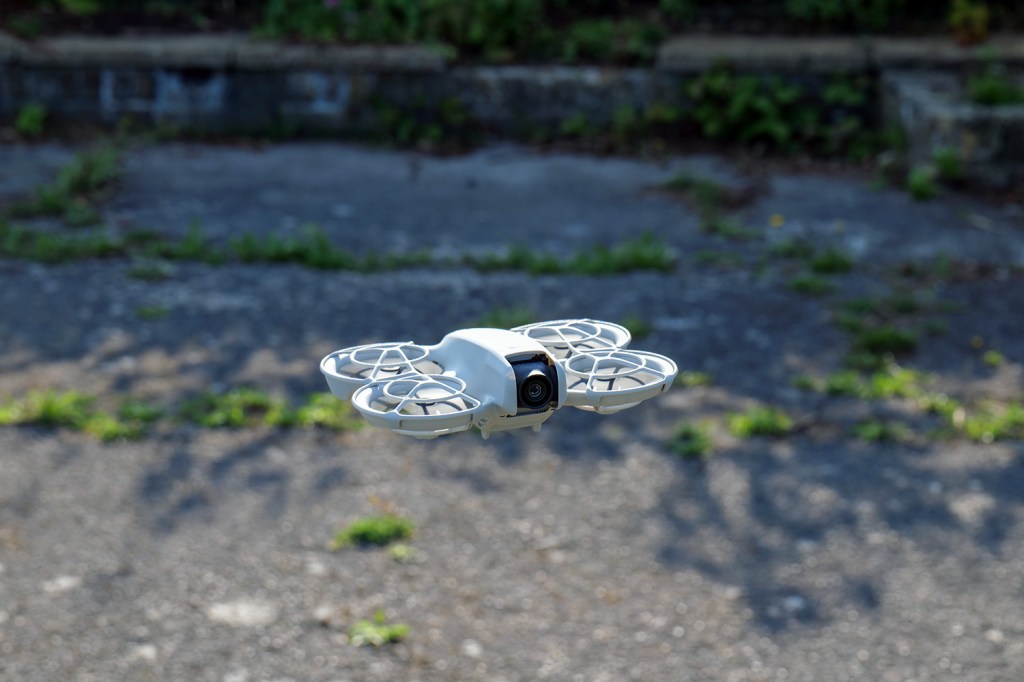
The Neo’s camera performance and flight capabilities fall well below that of the Mini, Air and Mavic drones I’m used to. But that’s not the point of it; it’s in a completely different class to DJI’s other offerings, with a price that puts it up against toys rather than serious enthusiast drones. And compared to the toy drones I’ve used in the past, the Neo is utterly fantastic.
Its responsive flight controls and features like return-to-home make it feel like far more than a toy, and it feels like an ideal choice for kids or apprentice pilots looking to sharpen their quadcopter flight skills before investing in a pricier, more capable camera drone.
Stuff Says…
The Neo is a ‘serious’ drone at the size and price of a toy drone and, while it has plenty of limitations, it’s the perfect drone for kids and novice pilots. Be warned though: once you’ve caught the drone bug, you’ll be raiding your bank account to buy a more expensive, less hamstrung model.
Pros
Compact, sturdy build
Fun to fly with a controller, and flyable without one too
Very affordable
Cons
Automated flight options limited
Average camera performance
No obstacle avoidance
DJI Neo technical specifications
| Flight time | 18 minutes |
| Camera | 1/2in 12MP |
| Video quality | 1080p/60fps |
| Storage | 22GB onboard |
| Dimensions | 130×157×48.5mm, 135g |


